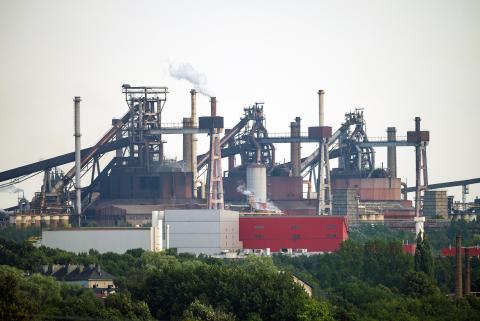IEEFA Germany: Czech Company That Got a Vattenfall Giveaway Wants More
When you take something off somebody’s hands at a discount price, especially when a shrewd seller is involved, common sense dictates that you might expect there to be some strings attached.
Shouldn’t such common sense apply equally to the Czech energy company, EPH, which last year acquired—for less than a song—highly polluting lignite assets from Vattenfall, the Swedish state-owned utility, but is now joining a lawsuit protesting against newly imposed pollution limits?
Last year, Vattenfall “sold” these assets in Germany’s Lausitz region to EPH and an obscure Czech interest called PPF Investments.
In the “sale,” Vattenfall actually not only signed away the power plants and lignite mines for free but also threw in some €1 billion in cash to consummate the deal and added an additional €600 million to accrue under a subsidy scheme called a lignite “standby capacity reserve.” At IEEFA, we calculated that the mines and power plants were worth more than €3.1 billion, even if they were all to be closed by 2030, which is something EPH is certainly be hoping to avoid (“A Foundation-Based Framework for Phasing Out German Lignite in Lausitz”).
Set against these €4.7 billion or more in assets, the lignite power plants and mines had liabilities worth €1.8 billion, chiefly comprising an obligation to clean up the lignite mines and return them to productive and suitable use over time.
Legal machinations to avoid complying with pollution regulations.
It was evident at the time of the deal that EPH, in other words, was acquiring valuable, highly cash-generative assets that far exceeded highly manageable liabilities.
As it turns out, EPH did even better than anybody thought. By good luck, it acquired the generation assets without power hedges, and then saw an immediate rapid increase in German power prices that it was able to take full advantage of (put options would have capped its sale price).
We calculated that the Lausitz lignite power plants and mines had average fixed and variable generation costs of about €24/MWh. We note now that German year-ahead baseload power prices have risen from €27/MWh on the day of the sale, on Sept. 30, 2016, to €36 today (see chart below). Assuming an average power price of €30/MWh, and operation of the 7,595 megawatts of power plants with an 80% capacity factor, we can calculate cash generation for EPH over the past 14 months of €370 million.
EPH, IN SHORT, HAS MADE A KILLING, but what of the strings? Vattenfall spelled these out quite clearly at the time of the sale.
Vattenfall Chairman Lars Norstrom stated: “The financial reasons (for selling) are obvious, given our views on current and expected price development and market conditions. Divestment is better than any hold scenario. We see some additional (future) regulatory and financial risks, such as additional costs for re-cultivation; additional cost for restructuring; additional, maybe costly, negotiations with different stakeholders in Germany; and an increasing scepticism among financial institutions regarding CO2-heavy industries.”
In other words, Vattenfall sold partly for strategic reasons, because it did not want to hold high-carbon assets, and partly because it expected further, costly, regulatory controls, given that lignite generation is a major source of emissions which contribute to air pollution and climate change.
Sure enough, less than a year on, in April 2017, European Union countries voted by a narrow majority to introduce new limits on sulphur oxide (SOX) and nitrogen oxide (NOX) emissions, to be implemented from 2021.
As IEEFA reported in a study published in May of this year, (“European Coal-Fired Power Plants: Rough Times Ahead”) the six units at EPH’s newly acquired Jänschwalde lignite power plant all exceed the new NOX limits, implying some extra costs either to upgrade the units or shut them down.
This week, it emerged that EPH would join a group legal action against the pollution limits, on the grounds that the Jänschwalde power plant could only meet the limits using technologies “legally not covered by the EU decision.”
Given that EPH bought the assets at such an obviously knock-down price, and by sheer good fortune (rising seaborne thermal coal and German wholesale power prices) has since bagged a windfall, can it really now justify avoiding having to invest in upgrading this aging asset?
A much stronger argument can be made that retirement of some of the Lausitz power plants and mines were over-compensated under “standby capacity reserve” language.
This deal could well serve a valuable lesson for future managed coal phase-outs.
Gerard Wynn is an energy finance consultant.
RELATED ITEMS:
IEEFA Europe: Behind Vattenfall’s Sell-Off of German Lignite Assets, a Subsidy Play by the Buyers
In Coal Giveaway to Czech Energy Group, a Public-Relations Problem for a Swedish Utilityd
IEEFA Europe: Seeds of an Industrial Alternative to Germany’s Regional Lignite Economies










